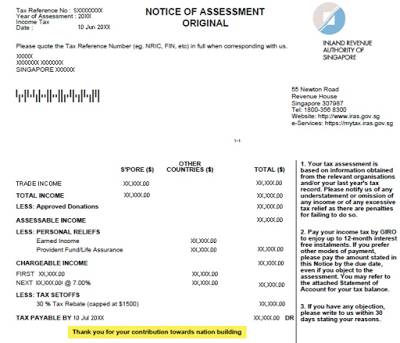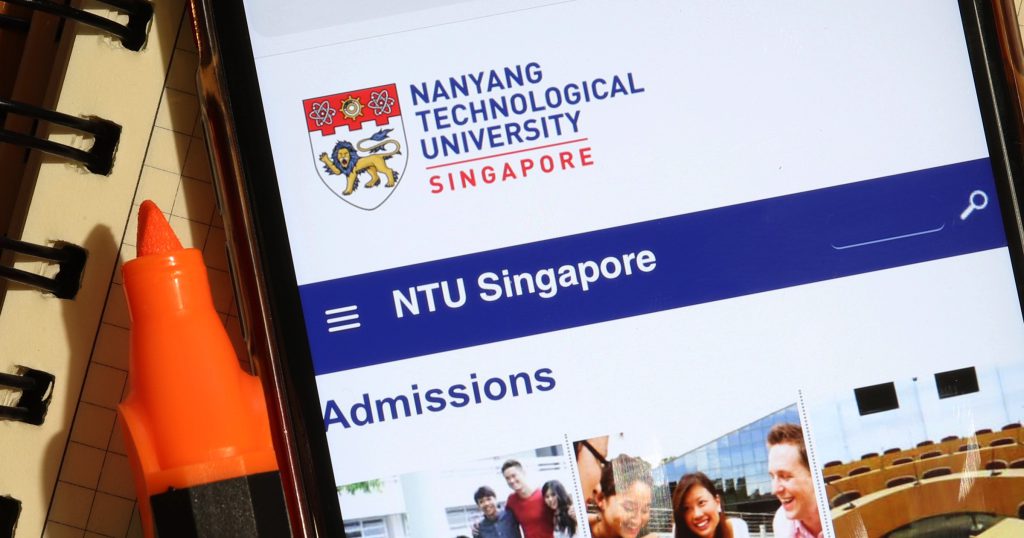Last month, I got a text from a number that only contacts me once a year. And every year, the message never fails to make me nervous.

Yes, IRAS is back to remind me/you to file your income tax.
For my sake (and yours), here’s a more-or-less comprehensive guide to surviving income tax season Singapore.
What Is Income Tax?
/8266555568_218538bcb4_z-59642e953df78cdc68c06a61.jpg)
All income earned in or derived from Singapore is chargeable to income tax, and can come from a few sources:
- Employment (e.g. salary)
- Trade, Business, Profession of Vocation
- Property or Investments
- Other Sources (e.g. annuities, royalties, winnings or estate or trust income)
In general, overseas income received in Singapore on or after 1 Jan 2004 is not taxable – except in some circumstances.
You will be subject to taxes if:
- Your income is received through partnerships in Singapore
- Your work overseas is part of your work here (e.g. you’re based overseas, but employed by a Singapore company)
- You are employed overseas on behalf of the Singapore Government
- Your have a trade/business in Singapore and you are carrying on a trade business which is incidental to your trade here
- You received service income from overseas
How Much Income Tax Am I Paying?
Singapore’s personal income tax rates for taxpayers are progressive.
What this means is that the higher income you earn, the more tax you pay.
The current highest tax rate is 22%, and those with an annual income below $22,000 won’t need to pay taxes.
Here’s a table of the current income tax rates, according to chargeable income:

To find out the exact amount you need to pay, you can use IRAS’ tax calculator here.
What’s No-Filing Service (NFS), And What Does That Mean For Me?
If you received a message stating that you have been selected for NFS (No-Filing Service), this means that you’ll be able to sit back, relax, and watch everyone else scramble to do their taxes.

But what’s the catch?
Nothing!
The NFS was introduced by the IRAS in 2008 to make tax filing easier for taxpayers.
Last year, 1.49 million individuals benefited from the NFS.
With the system, taxpayers only need to file a return if they have other sources of income that have not been included, or have to make changes to their tax relief claims (more on that later).
Thus, if you’ve been selected for NFS this year, all you’ll need to do is to verify the details of your auto-included information and preview your Notice of Assessment (tax bill showing your income tax).
What’s Auto-Inclusion Scheme (AIS), And What Does That Mean For Me?
If you’re in a company with 9 or more employees, it’s very likely that you’re included in the AIS (Auto-Inclusion Scheme).
AIS employers have to submit the employment income information of their employees to IRAS, so that when employees file their tax returns, they can save the step of submitting their income information again.

However, you’ll still need to file your tax return if you received a notification (letter, SMS etc.) from IRAS to do so.
If you have other income to declare, or additional claims for reliefs, you’d also need to file your tax return.
You can use the AIS Organisation Search to check if your employer is in the AIS, and if they have submitted your information for YA2019.
What If ‘NFS’ And ‘AIS’ Don’t Apply To Me?
If both acronyms don’t apply to your situation, you should be expecting a IR8A form from your employer.

To file your taxes, you’ll need to do it old skool and manually enter the information provided onto the tax portal.
What Are Deductions And Reliefs, And Can I Use Them To Reduce My Taxes?
Yes!
And they’re 100% legal too.
Expenses, donations, reliefs, and rebates are some deductions that you can claim to relief your taxes.
Let’s go through each of them briefly:
<< Deductions for Employees >>
Individuals have the option to claim tax deductions on employment expenses.
This means that you’d be eligible for a tax deduction if you used your own money to pay for expenses necessary to your employment – travel expenses, entertainment expenses, subscriptions, etc.
However, do note that these expenses are those which have not been reimbursed by your employer.
Claims would also need to be supported by invoices, receipts, and vouchers lest IRAS asks for them.
<< Deductions for Sole-Proprietors, Self-Employed or Partners in a Partnership >>
Individuals who are sole-proprietors, freelancers, or partners in a partnership can claim tax deductions on business expenses, medical expenses, expenditure on R&D and even expenses incurred before commencement of business.
Read more about all of them in detail here.
<< Deductions on Rental Expenses >>
Individuals are also able to claim tax deduction on expenses related to rental income derived in Singapore.
This includes premiums paid on fire insurance, repairs done during the rental period to restore the property to its original state, costs of maintaining the property, and even costs like agent commission to secure subsequent tenants.
Check out the whole list of claimable items here.
<< Deductions on Donations >>

To encourage Singaporeans to give back, deductions can also be made on donations that you make.
Individuals are able to claim tax deductions of 2.5 to 3 times the amount of donations made 2009 to 2021.
Read more about what constitutes a qualifying donation here.
<< Deductions under Angel Investors Tax Deduction Scheme >>
This scheme is set in place to encourage individuals to invest in startups.
Investors would be able to claim a tax deduction when they have invested at least $100,000 of qualifying investments in qualifying startups within 12 months from the date of their first investment, and also hold the investment for a continuous period of 2 years from the date of the last qualifying investment.
To qualify, investors would also need to first apply to SPRING Singapore, to be approved as an angel investor.
Read more about the scheme in detail here.
<< Reliefs and Rebates >>
There are many reliefs and rebates available, so be sure to leverage on them to reduce your assessable income!
Here’s a table of all of them:

Some noteworthy ones:
- Course Fees Relief: You can claim up to $5,500 a year for courses, seminars, or conferences you attended in the YA. Do note that the relief is only applicable when the course is relevant to your current employment, trade, business, profession or vocation!
- NSman Relief: NSmen can claim from $1,500 to $5,000 under this relief. NSman Wife and NSman Parent Reliefs are also given to the wives and parents of NSmen to recognise the support they give to their husbands and sons.
- Life Insurance Relief: To qualify for this relief, you’ll need to satisfy a few conditions. First, your contribution to your Medisave account must be less than $5,000, next, you paid insurance premiums on your own policy, and finally the issuing insurance company must have an office or branch in Singapore.
The list of reliefs and their conditions is long, so check out the ones that are most applicable to you here.
Now…What Comes After Filing Taxes?
Congratulations – you’ve made it to the end!
Once you’re done with filing your taxes, you can rest easy until you receive a Notice of Assessment (NOA) / tax bill.
Most taxpayers should receive their NOA between end April to September 2019.

Do remember to check through your NOA as soon as you receive it.
If you have any disagreements with the tax assessment, you can file an objection within 30 days from date of the NOA.
If all’s good, you can proceed to make payment using any of these few methods:
- An interest-free GIRO plan over 12 months
- Electronic payment modes like AXS, i-Banking, ATM, SAM
- Cash/NETS at Singapore Post branches
- Cheque or cashier’s order
You have less than a month left to the deadline (18 Apr), so do get started on it ASAP.
And don’t forget to check for reliefs!
P.S. If you’ve not received any notification from IRAS, you can check your filing requirements using this tool by IRAS.
–
The folks at IRAS have sent us this infographic as a tl;dr on what you need to know for tax season.
Remember to spread the word to your friends and colleagues!

Featured Image Credit: Rikvin











